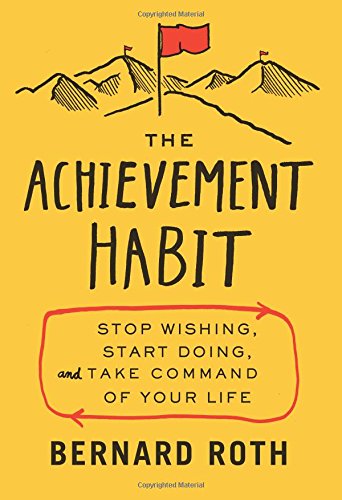
The Achievement Habit
Stop Wishing, Start Doing, and Take Command of Your Life
کتاب های مرتبط
- اطلاعات
- نقد و بررسی
- دیدگاه کاربران
نقد و بررسی

April 27, 2015
Roth, academic director of Stanford’s Hasso Plattner Institute of Design (known as the D.school), offers an accessible primer to the basic elements of design theory, based on the premise that “achievement can be learned.” Tenets include “making the familiar unfamiliar,” individual responsibility, and reframing questions in order to find solutions. To illustrate the last principle’s importance, Roth describes some D.school success stories, including presenting MRI testing to child patients as an “adventure.” He explains designer Rolf Faste’s 22 “tools from product design culture” for driving personal development, and celebrates the Stanford Design department’s embrace of the cooperative over the hierarchical. Roth also provides exercises to help readers reexamine their beliefs, evaluate their goals and motivations, and get over the habit of making excuses. He also addresses interpersonal skills, including constructive criticism, the importance of remembering names, and the use of improvisation during brainstorming sessions. Roth’s overall message is that identity is malleable and based on choices, meaning that anyone can choose to eliminate negative characteristics and embrace a more achievement-oriented course. While this book may not be the final fix for those struggling to achieve, it’s certainly a place to start. Agent: Lynn Johnston, Lynn Johnston Literary.

May 1, 2015
Tested methods for obtaining the life you really want. Academic director of the Hasso Plattner Institute of Design (the d.school) at Stanford University, Roth pulls together years of experience in teaching students and professionals how to accomplish more out of life and presents those findings in a clear narrative. He incorporates thought-provoking questions into his analysis that allow readers to discover for themselves the answers to such queries as, "Who am I? What do I want? What is my purpose?" He also encourages readers to think about their family backgrounds and how the dominant role models in the formative years have influenced and affected them in adulthood. The questions are based on the feelings one has toward money, authority figures, hard work, personal fulfillment, school, and hobbies, among many others. The key emphasis throughout is that one must do things, not just try to do them. As Roth writes, "when you do, you are using power; when you try, you are using force. In life, if you want to get things done, it is much better to be powerful than to be forceful." He backs up these statements with multiple examples of d.school students who have taken his advice and advanced their lives on numerous levels. By presenting situations that show how others have succeeded when using these tactics, Roth makes it easy for readers to follow suit. Each step is a logical progression from the previous one, so readers are advised to read the book straight through and not try to jump around searching for a quick solution. Sometimes, readers will go back and repeat a previous step in order to reach a more satisfying resolution. Ultimately, the result should be an improvement in one's personal life and relationships. Effective methods to help in the process of making positive changes in one's life.
COPYRIGHT(2015) Kirkus Reviews, ALL RIGHTS RESERVED.

June 15, 2015
Roth (Rodney H. Adams Professor of Engineering & academic director, Hasso Plattner Inst. of Design at Stanford, Stanford Univ.) has written an inspirational and practical guide on how to fulfill goals despite obstacles and challenges. He presents his ideas based on the "design thinking tradition" and has chosen "to focus on personal transformation and empowerment." Design thinking, which was given its name by Stanford University professor David Kelley, features principles based on the needs to empathize (with other people's needs and desires in mind); define the problem; ideate (create possible solutions); prototype (develop plans, build projects in physical form); test; and get feedback. Roth includes plentiful advice and related instructions to achieve goals; for example, trying is not good enough (don't try--do); excuses, even legitimate ones, are self-defeating; language influences people and better communicators can help to accomplish success; ignore distractions; and be open to learning from experience. Case studies throughout focus on how to avoid self-defeating behavior and advance. VERDICT Roth's excellent advice on how to overcome obstacles and triumph should be of interest to readers college age and up.--Lucy Heckman, St. John's Univ. Lib., Queens, NY
Copyright 2015 Library Journal, LLC Used with permission.

























دیدگاه کاربران